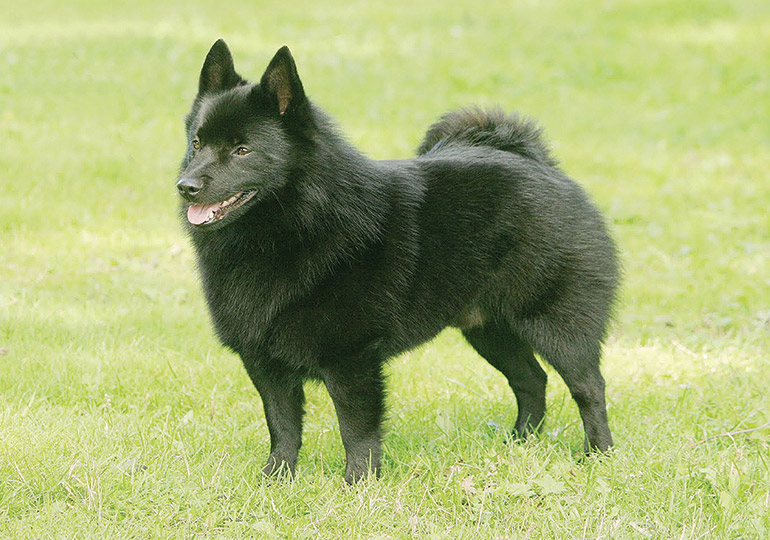
GROUP 7 - NON SPORTING
Schipperkes have been around for a very long time. Carvings in Belgium dating back to 1356 depict a sheepdog with a similar look to the Schipperke. Back then its main occupation was guarding and killing vermin, making it a true working dog. Throughout history, bakers, barge operators, shopkeepers, farmers and peddlers used the Schipperke to chase and kill rats and mice on their premises, as well as guarding against intruders.
Today many kennels are successfully breeding Schipperkes as pets as well as for showing and the sports of Agility and Obedience. The breed is assured a healthy future with breeders found in most states.
The Schipperke makes a striking first impression. A small, compact dog, it’s broad across the shoulders with narrow hips, creating a unique outline.
The Schipperke’s coat is usually jet black, but can be cream or other whole colours. It has an alert appearance with sharply pricked ears, dark expressive
eyes and a fox-like face.
The Schipperke is full of energy, intensely alert and lively. It can take off after its prey at an amazing speed. Since hunting vermin mainly takes place outside, the Schipperke’s coat can cope with harsh weather – a dense undercoat, with a hard short topcoat that repels water. A good shake will see it nearly dry after a soaking. The Schipperke also has a cape of longer hair to frame its head and neck, falling down the middle of its back and culottes, covering the sturdy back legs. A brush weekly, or every second day when shedding, is all that is needed to keep its coat in top condition.
Schipperkes are robust, hardy dogs with few health problems or conditions. They can develop arthritis in their old age, but are known to live well beyond their teen years. While none of the following conditions are prevalent in the breed, efforts are being made to minimise them and they are important to mention.
Epilepsy is occasionally found in a small percentage of Schipperkes. It is thought that some forms of epilepsy are hereditary but the pattern of transmission is unclear. A study on epilepsy in Schipperkes is underway at the University of Finland using tests taken from UK and European Schipperkes.
Mucopolysaccharide type IIIB (MPS IIIB) is a degenerative disease affecting the neurological system. There is no effective treatment for infected dogs, but no cases of the disease have been recorded in Australia.
As tests have identified that dogs here carry the mutated gene, breeders are encouraged to test their breeding stock before mating. With care and cooperation it is possible that no Schipperke in Australia will be affected by MPS IIIB.
The Schipperke has survived the centuries by adapting to the times. While the breed has a great deal of energy, it can also spend a long time on your lap, having a nap or sharing your bed.
It constantly talks to you, expressing its voice through ‘huffs’, and will sharply warn you of strangers. But it also loves company and uses different tones to let you know when friends or family have arrived.
Exercise-wise, the Schipperke enjoys walking and swimming. Travelling in the car is a treat, perhaps harking back to its travels in barges or peddlers’ carts, and the breed has a special affinity with children.
Its intelligence means the Schipperke learns easily and is a good jumper, so is valued in Agility competitions. The breed is so versatile that some have been known to work as both assistance dogs for the deaf and herding dogs to round up sheep.
Words: The Schipperke Association of NSW
Now you know a little about the Schipperke, you may think that this is the dog for you. Before you make a decision, please make contact with the breed club or your State controlling body for purebred dogs. They will be able to give you information about available puppies and also suggest dog shows where you can see the breed and speak to breeders. In this way you will gain a better perspective of the Schipperke and its needs, and whether this breed would suit your lifestyle.